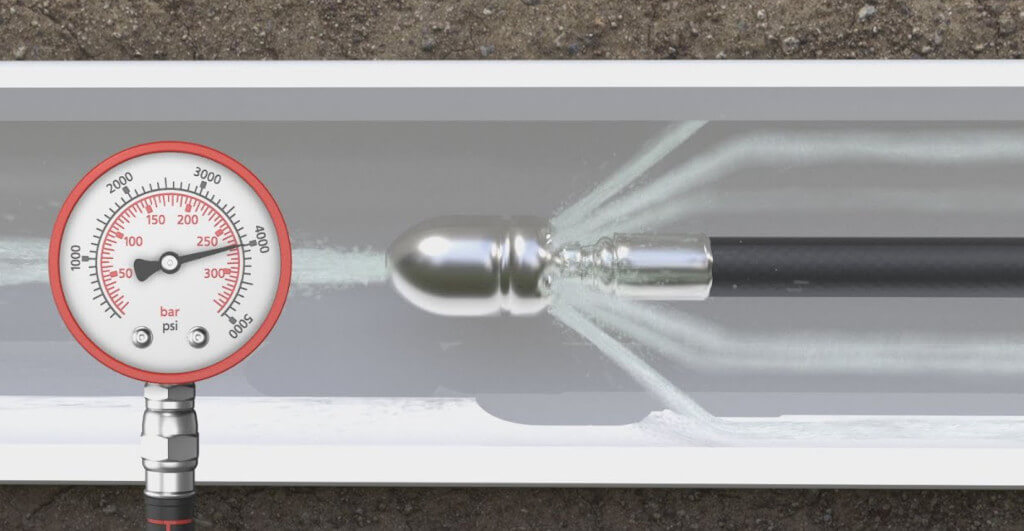Many of us cringe at the thought of paying for an urgent callout from an expert drain cleaning service because clogged drains are an annoyance. However, unclogging drains are best left to the experts. It is enticing to purchase a set of drain rods from Builders Warehouse or on Takealot, roll up our sleeves, and complete the task on our own.
It’s Possible That Drain Rods Can Only Provide a Partial Fix
But even if the obstruction isn’t too drastic, drain rods might be able to make a way through it. However, in the majority of situations, they can only clear the obstruction in part. In many cases, they will only restore the drain’s effectiveness to 30 percent or less, and because the obstruction will not be removed entirely, it is only a short amount of time before the issue will arise again. Furthermore, abandoning a drain that is partially blocked up will generate other issues over time, such as the internal rust of metal pipes and enhanced tension on joints further upstream from the obstruction.
The Use of Drain-cleaning Solutions May Cause More Problems Than They Solve
Because there is such a wide variety of drain-unclogging chemicals readily available on the shelves of our grocery stores and hardware stores, it is not difficult to be persuaded into attempting this method. And besides, it is speedy (you simply unclip the cap, pour some into the drain, wait a while, and then rinse it away), simple (there is no need to mess with difficult drain rods), and hygienic (no having to clean the stinking drain rods afterward).
However, there’s an issue, and that issue lies precisely with the way that drains cleaning chemical compounds function. When they come into contact with water, the majority of them contain a mixture of sodium hydroxide (also known as caustic soda), potassium hydroxide, and aluminum oxide, all of which generate hydrogen gas. This gas generates bubbles, which help remove the debris that is causing the obstruction and scatter them in all directions. The issue is that although these compounds are effective at eating clogs, they don’t know where to stop and will immediately start to eat through the drainage pipe itself.
The Most Effective Method for Both Immediate and Long-term Drain Effectiveness is Drain Jetting
Drain jetting could be the solution for you if you’ve found that recurrent issues are causing you to spend a significant amount of effort or funds on the routine cleaning and maintenance of your drains. The process of drain jetting, which is also recognized as hydro jetting, involves pumping water through a high-pressure hose and a uniquely engineered nozzle. This nozzle guides the water jet at the optimal angle and forces it to rapidly clear persistent obstructions and mainstream clogs.
Drainage jetting is the easy pick because the hose can stretch much farther down the piping system than drain rods or plumbing snakes can, maneuver through bends more quickly, and assert a stronger force on the obstruction. As a result, drainage jetting can reinstate up to 95% of the flow performance that was lost.
Drain jetting is compliant with most varieties of drains and will function efficiently on most obstructions, such as backed-up wastewater or compressed waste that is difficult to move. Drain jetting can also be used to remove debris that has been compacted. Hydro jetting is also more effective at removing fat and grease, both of which have the potential to either form small ‘fatbergs’ in your drain pipes or decrease the flow effectiveness of your pipelines by lining them. Drainline water jetters are designed to be more effective than cable machines in unclogging drains that have become clogged or otherwise obstructed.
There Are Many Benefits to Using Water Jetting to Clean Drains
If you employ the jetter in combination with an inspection camera, you will not only be able to clear the obstruction in the drain, but you’ll also be able to identify the source of the issue and work to eliminate it so that it does not occur again in the future. To use a high-pressure, hot-water jetter equipped with jetter nozzles that have been appropriately drilled, you must first input the jetted’s nozzle into an entry point on the drain, sewer, or downpipes that are clogged. When water under constant pressure is forced through a drain, it can effectively eradicate all FOG accumulation and gunk from the pipe sides, as well as flush out any foreign bodies or roots (with the help of the appropriate root nozzle) that could be obstructing the pipes.
Green and Not Harmful to the Environment
Waterjetting takes away the blockage entirely and securely, stopping self-healing debris of materials such as grease from trying to reform. This is in contrast to traditional snake-type cleaners, which break up particles and leave debris behind, only to re-clog later. Because this method only involves the use of water, it eliminates the risk of potentially hazardous substances being flushed down the drain and entering the water treatment facility.
Extremely Effective at Unclogging Blocked Drains and Plumbing
The use of high-pressure water jetting as a drain cleaning solution is superior to a variety of other approaches. It possesses the power to penetrate deeper into built-up debris (especially when combined with hot water) and flush roots, rocks, minerals, and any other obstacles that can block up and get doused onto pipes. Using a cable machine, debris within the sewage pipe can be cut by a steel spring cable that jumps and bounces around to permeate the obstructions. Nevertheless, there is a risk that this method will damage the pipes without completely clearing the obstruction. Particles could be left behind. A high-pressure water Jetter will not just remove the obstruction, but it will also force any residual particles into the primary sewage pipe, which will prevent any additional obstructions from occurring in the future.
To Summarise
It has been demonstrated that cleaning the pipes using hot water jetting is more effective and takes less time. The accumulation of “scale” can be loosened with the help of hot water, which is particularly useful for removing FOG buildup. Although hydro jetting may not be necessary for every instance in which a drain becomes clogged, it might be the best long-term remedy to recurrent issues, and if a sewage system is susceptible to becoming clogged, hydro jetting could be incorporated into a preventative maintenance timetable. For more information on drain jetting services in Cape Town, click here.

